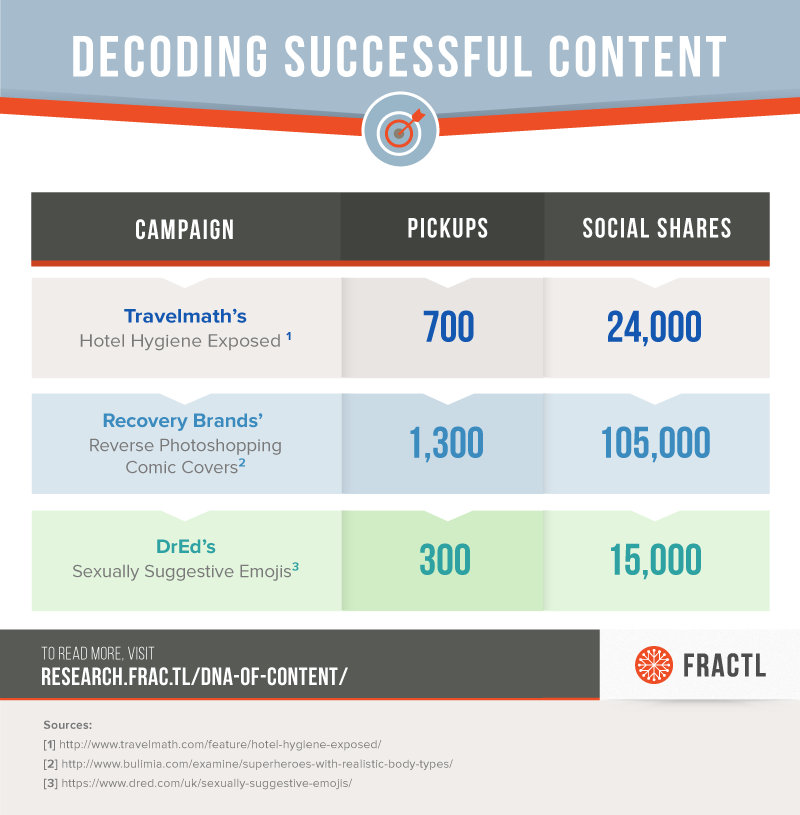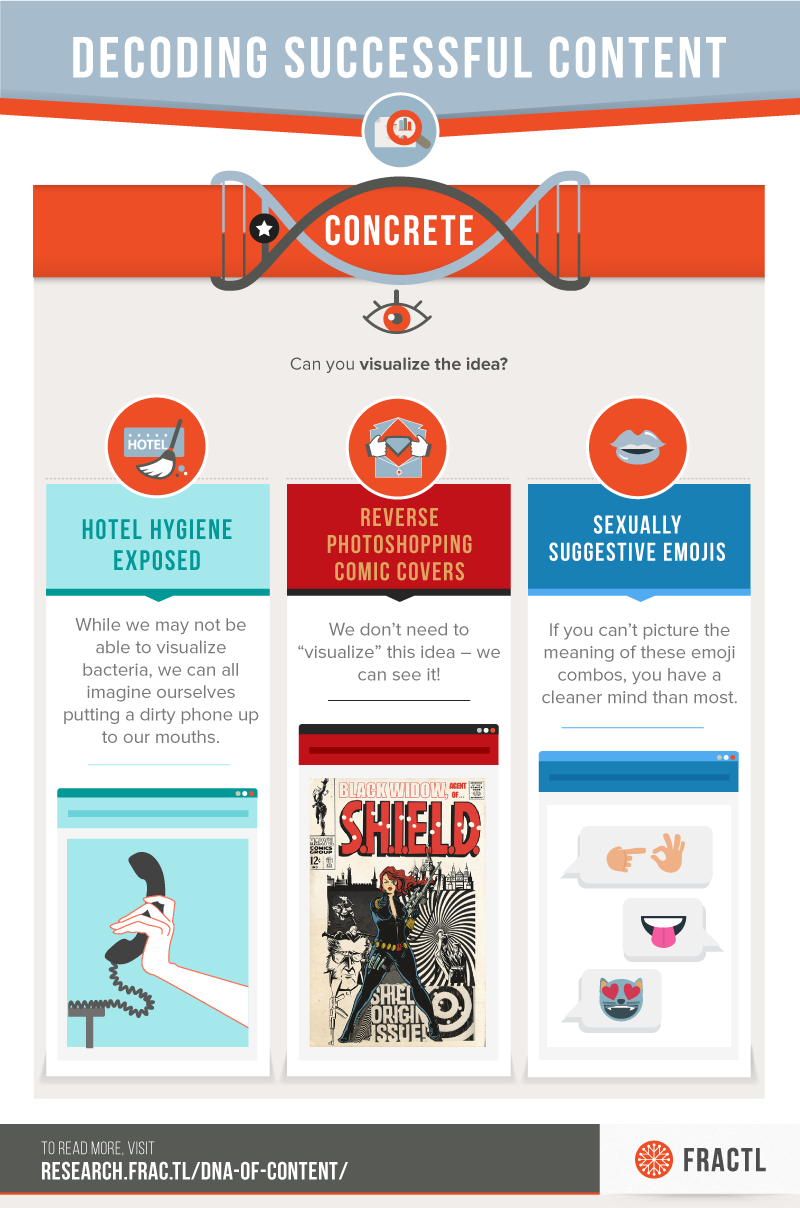
In their book, “Made to Stick: Why Some Ideas Survive and Others Die” Chip and Dan Heath outlined the six components of compelling ideas:
Simple. Unexpected. Concrete. Credible. Emotional. Stories.
Marketers can use these criteria to improve their projects and troubleshoot struggling campaigns. To better understand their model, we looked at how three successful campaigns stacked up to their characteristics.
Simple
Simple doesn’t mean that you have to choose a boring concept. Every campaign has to have a strong core concept. If you find yourself struggling to concisely explain a project, then you need to sit down with your team and define your focus. We can describe each of these three campaigns in one sentence:
- “Hotel Hygiene Exposed”: We tested surfaces in hotel rooms to determine, “how dirty are hotel rooms?”
- “Reverse Photoshopping Comic Covers”: We modified comic book covers so that they portrayed superheroes with realistic body types.
- “Sexually Suggestive Emojis”: We scraped Twitter to determine which sexually suggestive emojis were most popular.
Unexpected
Without an element of surprise, content falls flat. You don’t want to tell your readers something they already know.
Concrete
In academia, abstract ideas can change the world. In marketing, ideas that are too broad or too theoretical will not see the light of day.
Credible
If you make any claims that are not backed up by a strong methodology, your whole project will be put into question. If you put your work on the internet, you better make it troll-proof.
Emotional
Your content doesn’t have to make readers feel like they’re watching a Sarah McLachlan ASPCA commercial, but it has to elicit some sort of emotional response from an audience.
- “Hotel Hygiene Exposed”: Most people have stayed in a hotel at some point in their lives. This content is relatable and elicits feelings of disgust.
- “Reverse Photoshopping Comic Covers”: Unfortunately, many people can relate to body image issues. For comic book fans, this content packs double the punch.
- “Sexually Suggestive Emojis”: By openly addressing a taboo topic, this content can elicit a variety of emotional responses from readers.
Stories
Finally, the campaign has to be something that you would tell your friends about. If you don’t find it interesting, chances are no one will.




